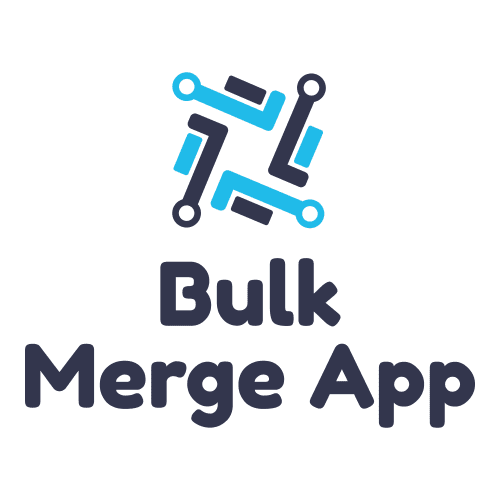Salesforce Omni-Channel: Uses, Advantages, and How To Set It Up

Implementing a robust and efficient customer service strategy should be a paramount goal for any business. Effective customer service promotes consumer loyalty and employee confidence, and results in consistent communications and a reputable brand.
One of the hallmarks of an excellent customer service program is the company’s ability to provide streamlined, responsive support through multiple service channels. By interacting with your customers in a contact method they are comfortable with, you make them feel listened to and cared for. An omnichannel support solution like Salesforce Omni-Channel can give your business the capability to do precisely that.
What Is Salesforce Omni-Channel?
Salesforce Omni-Channel is an omnichannel support feature in the Salesforce Service Cloud designed to improve customer service. In a nutshell, Omni-Channel automatically directs your consumer support work to the appropriate customer service agents based on the routing criteria you develop.
One of the distinct characteristics of Salesforce Omni-Channel is that it allows your customers to connect with your users seamlessly in various communication modes. Your customers can choose the best means of getting in touch, such as email, SMS, service portal, or web chat. Then, automatic routing configurations will connect them to the appropriate customer service agent.
Available in the Salesforce AppExchange, Omni-Channel can enhance customer service for any consumer-based business. As companies have evolved to conduct more and more business online, the need for omnichannel support solutions has become evident.
Salesforce Omni-Channel Uses
One of the primary uses for Omni-Channel is to directly connect your client base with your support team in the most convenient way for your buyer. Your customers can select from a range of channels and transition between them if their case requires more than one interaction.
You can route your customers in three ways: queue-based, skill-based, and external routing. Establishing the ideal configuration for your staff requires considering the size of your organization, your staff’s skill sets, and the external apps you currently utilize. We will get into more detail about routing configuration further down the article.
The Key Advantages of Salesforce Omni-Channel
There are many benefits to instituting an Omni-Channel Salesforce customer service system. The culmination of all the benefits is improved experiences for your clients and team members.
Allows for a Balanced Workload and Better Productivity
Omni-Channel administrators can limit the maximum number of cases each customer service agent can receive. This feature is critical in creating balanced workloads for your teams. With the free Performance Dashboard add-on, supervisors can view pre-built dashboards to analyze key metrics to promote greater agent efficiency and productivity.
By monitoring performance, team leaders can evaluate KPI data to determine where customer service agents excel and offer incentives. Alternatively, if admins notice areas of weakness, they can develop tailored training programs to fortify their staff members’ skill sets.
Increases User and Customer Satisfaction
Your users can interact with your clients from a centralized location regardless of channel, reducing the time your staff spends switching between applications and platforms. Meanwhile, your clients can transition from email to chat to phone calls without interruption or loss of information. This capability dramatically improves response times and eliminates many annoyances customers and users experience with support exchanges.
Because Omni-Channel delivers a virtual, cloud-based workspace, companies can offer their employees the flexibility to work remotely, independent of contact centers. Your users will also appreciate the streamlined workflows and employee collaboration Omni-Channel promotes. If they need to include other team members in their cases, they can communicate internally without putting clients on hold or transferring them to a different department.
Keeps Brand Voice Consistent and Clear
With Omni-Channel, your representatives’ messages are coordinated and unified. Today’s consumers are savvy, and when your company delivers consistent interactions across channels, your clients notice in the form of positive brand awareness.
Customers feel heard when they experience consistency in their dealings with your company. They will then share their trust in your business with their friends and family in person or on social media. This positive word-of-mouth exposure could generate leads for your sales team to nurture.
Provides a Total View of Your Target Audience in Real Time
With Omni-Channel, users can view all interactions within their assigned cases, giving them a holistic picture of each case, and preventing repeated conversations with clients.
Because all customer contact resides in a central location, you can utilize it easily and in real-time. You can quickly identify trends in the purchase history, service issues, and intel on various touchpoints with the client with Salesforce Omni-Channel reporting. However, a customer’s journey includes more than just their support conversations. When you optimize Omni-Channel within the Salesforce ecosystem, you can incorporate this information into the robust dashboards and visualizations your team uses.
How To Properly Set Up Salesforce Omni-channel
Salesforce Omni-Channel routing configurations are at the core of the service. You should weigh your options carefully to choose between queue-based, skills-based, and external routing rules. To select the best method for your staff, you must determine how you want to distribute your incoming work items.
Queue-based routing is ideal for smaller organizations with agents who have broad knowledge of the business and its offerings. As cases enter the queue, Omni-Channel distributes them to the users with available status.
A skills-based routing plan would suit larger organizations with more complex customer service needs. These companies generally have multiple products and services, or require support agents who speak different languages.
Finally, external routing is for businesses that prefer to use a third-party application programming software in conjunction with Omni-Channel. Companies may have developed logic routes with trusted APIs and wish to integrate this logic with Omni-Channel.
Get the Extra Assistance You Need To Keep Salesforce Maintained
Omni-Channel can give a substantial boost to your customer service program. Improve your consumer and user experience by contacting Astreca Consulting today. We can help you implement Omni-Channel into your current Salesforce ecosystem so you can maximize all the benefits it has to offer.
#CustomerExperience #CustomerServiceAutomation #EfficientCustomerSupport #OmniChannelAdvantages #OmniChannelStrategy #SalesforceOmniChannel #ServiceCloudIntegration #SettingUpOmniChannel






